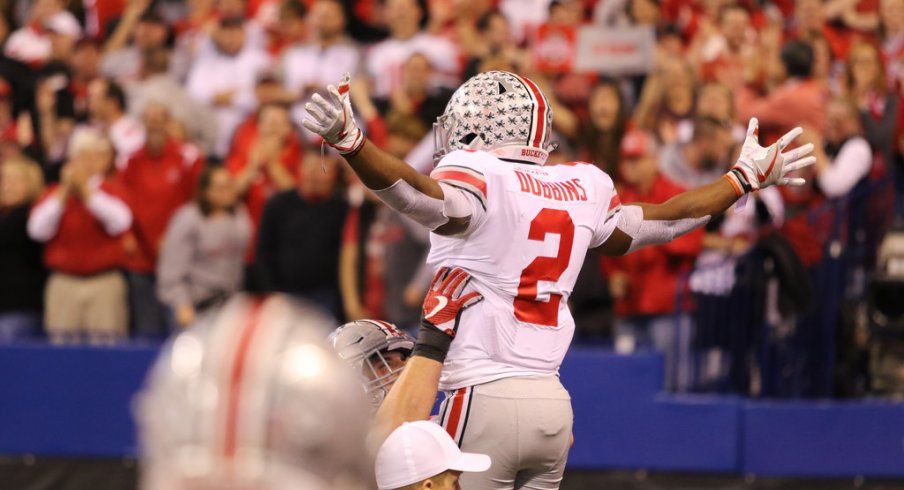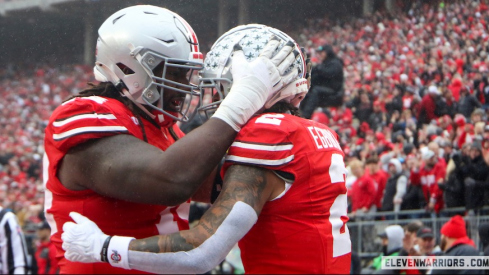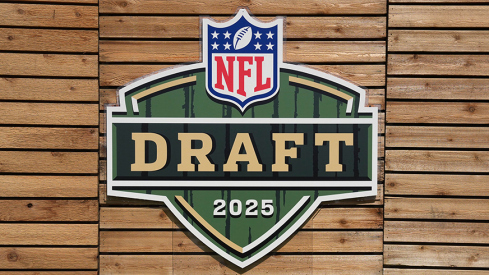Many expected J.K. Dobbins would be a freshman standout in 2017. Few expected the kind of season he had.
J.K. Dobbins entered backfield already led a sophomore back, Mike Weber, that led the team in rushing and won the Big Ten Freshman of the Year award in the previous season. He capitalized on an opportunity presented by a preseason injury to Weber and had a debut for the ages against Indiana.
That catapulted a season in which Dobbins led the team in rushing, besting Weber's freshman campaign in every statistic.
But how does Dobbins compare to other legendary freshman seasons? This Inside the Box feature will situate Dobbins' freshman year in perspective, comparing his freshman year with other legendary campaigns from the likes of Archie Griffin, Robert Smith, Maurice Clarett, and the aforementioned Mike Weber. All were backs that led the Buckeyes in rushing yards as freshmen.
Generally, the statistics do well to suggest Dobbins has arguably the best freshman year of all-time. However, Dobbins was arguably not as important to the 2017 Buckeyes as Clarett was to the 2002 Buckeyes. Even though Ohio State played three games in 2002 without Clarett's services, the Buckeyes rode him more than it rode Dobbins in 2017.
Dobbins Leads All Freshmen in Yards and Yards per Carry
The most impressive summary statistics for Dobbins in 2017 concern arguably the two most important metrics for a tailback. Dobbins' 1403 yards in 2017 is 166 yards more than the previous freshman best from Maurice Clarett in 2002. Further, Dobbins blew past previous benchmarks on yards per carry.
| Back (Season) | Attempts | Yards | Yards per Carry | Rushing TDs |
|---|---|---|---|---|
| Archie Griffin (1972) | 159 | 867 | 5.5 | 3 |
| Robert Smith (1990) | 177 | 1126 | 6.4 | 8 |
| Maurice Clarett (2002) | 222 | 1237 | 5.6 | 16 |
| Mike Weber (2016) | 182 | 1096 | 6.0 | 9 |
| J.K. Dobbins (2017) | 194 | 1403 | 7.2 | 7 |
His 7.2 yards per touch is also well above the record for freshman tailbacks (who led their team in rushing) previously set by Robert Smith in 1990. Smith had 6.4 yards per carry as a freshman in 1990.
Dobbins beats the other freshmen in this list on those two metrics though it is clear he falls short on scoring. His seven rushing touchdowns in 2017 is next to last on this list of freshman tailbacks. Archie Griffin has the curious distinction of being the lowest-scoring freshman tailback among those select few freshmen that led their team in rushing. Griffin had just three rushing touchdowns in 1972; Champ Henson did the bulk of scoring (20 touchdowns) that year.
Maurice Clarett is conspicuous in this list for having almost twice the rushing touchdowns as the next highest-scoring freshman tailback on this list (Mike Weber). Those that remember the 2002 season well will note that Clarett is unique among this list for being arguably the back and the primary offensive engine in 2002. He was the sine qua non for a national championship campaign.
Even as Robert Smith and Mike Weber were the primary rushing options in 1990 and 2016, Ohio State did not ride them quite like it rode Clarett (as often as it could) in 2002. Weber, in particular, played in a loaded backfield that featured one of the best all-purpose players in the country (Curtis Samuel) and a rushing quarterback (J.T. Barrett).
Further, Griffin's margin in rushing yards only narrowly exceeded Champ Henson's season total. Henson had 795 yards on 193 carries, doing the bulk of the work near the goal line in Woody Hayes' "three yards and a cloud of dust" offense.
All told, Dobbins' freshman season stands out for surpassing all other backs in total yards and, impressively, yards per carry even as he did not find the end zone as often as the other freshman tailbacks in this list.
Clarett Was Arguably a More Important Back in 2002 Than Dobbins in 2017
Continuing the previous discussion, Clarett's campaign in 2002 was arguably more important than Dobbins' campaign in 2017 even as Dobbins beat Clarett in total yards and even yards per carry.
You see this in one obvious statistic beyond the difference in rushing touchdowns: Clarett had 28 more carries in 2002 than Dobbins had in 2017.
In other words, Ohio State rode him more than it rode Dobbins in 2017, which is a function of different offenses and talent-levels from 2002 to 2017. Ohio State has more spread concepts on offense now than it did in 2002. Offenses have evolved considerably over the years, making the use of mobile quarterbacks more common.
Another more impolitic way of saying this is Mike Weber was a far better second option at tailback in 2017 than Lydell Ross was in 2002. Jim Tressel needed Clarett in 2002 far more than Urban Meyer needed J.K. Dobbins in 2017.
Those who remember 2002 well will also see this manifest in another statistic: yards per game. Maurice Clarett had more yards on average in the games in which he did play than J.K. Dobbins. Clarett battled several injuries over the course of 2002 and missed three games that season.
Controlling for that, Clarett averaged 12 more yards a game even as Dobbins beats Clarett in total yards and even yards per carry.
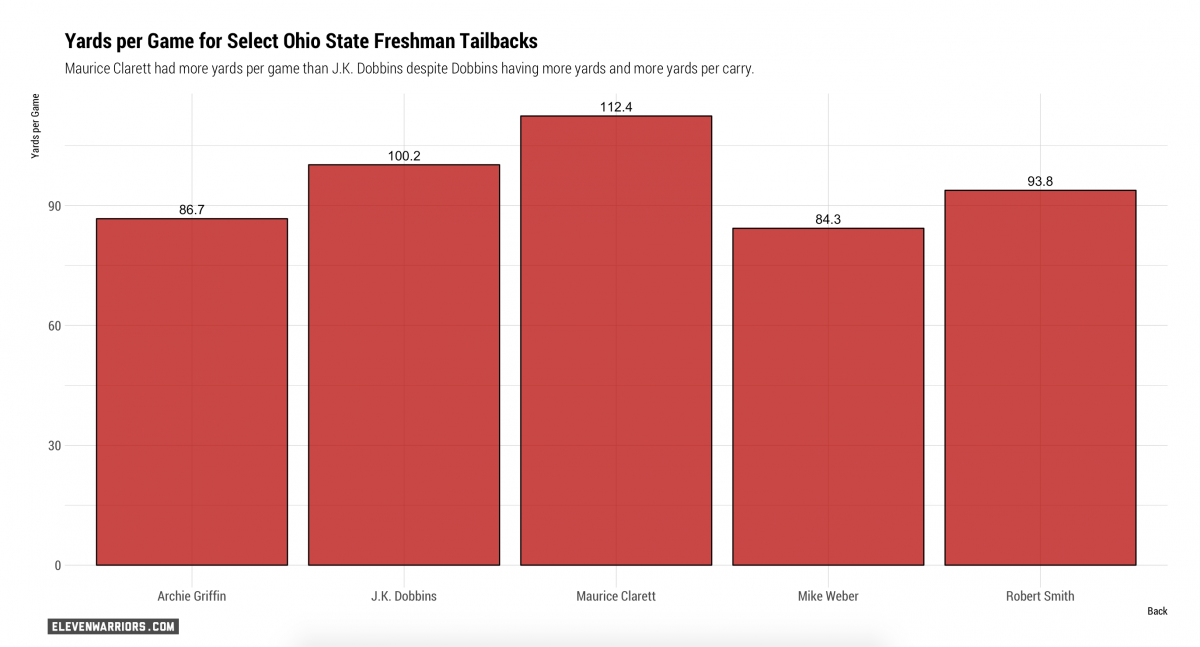
This also implies there's some interesting variation between Clarett and Dobbins after understanding Clarett missed three games in 2002. Indeed, there is that interesting game-by-game variation in which it seems Clarett is generally having higher-volume rushing outputs over the course of the season in the games in which he did play.
Ohio State played 14 games in 2002 and 2017, making a game-by-game comparison of Clarett and Dobbins fruitful and accessible notwithstanding Clarett's three absences. The graph shows that Dobbins nominally had the better debut, netting 181 rushing yards against Indiana to Clarett's previous freshman debut-best of 175.
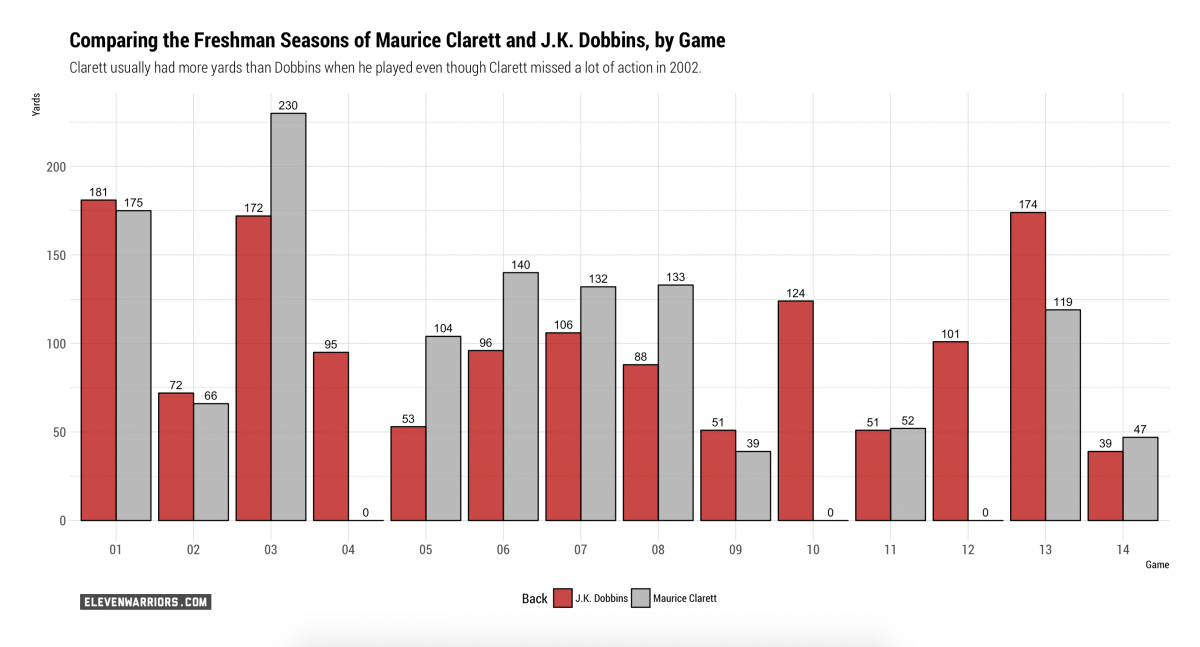
Thereafter, Clarett usually well exceeds Dobbins' rushing outputs by game in the games in which Clarett did play. For example, Clarett had 230 rushing yards in the third game against eventual Pac-10 champion Washington State. Dobbins, in his third game, had 175 rushing yards against Army.
However, Clarett missed the road game at Cincinnati whereas Dobbins had 95 rushing yards against UNLV. Thereafter, Clarett reliably surpasses Dobbins in by-game rushing yards, excluding those in which Clarett did not play (Minnesota and Purdue).
These statistics qualify what may have otherwise been the best season for a freshman running back in Ohio State history for J.K. Dobbins. Dobbins stands out for having the most rushing yards and, impressively, the most yards per carry of any freshman back that led the Buckeyes in rushing.
However, Maurice Clarett may have been more important to Ohio State in 2002 than Dobbins was to Ohio State in 2017, even as Clarett did not play in three games for that national championship squad. Ohio State rode Clarett more than it rode Dobbins in their respective years. Clarett reliably outrushed Dobbins, by game through the course of the season and in overall rushing yards per game, as a true freshman.
